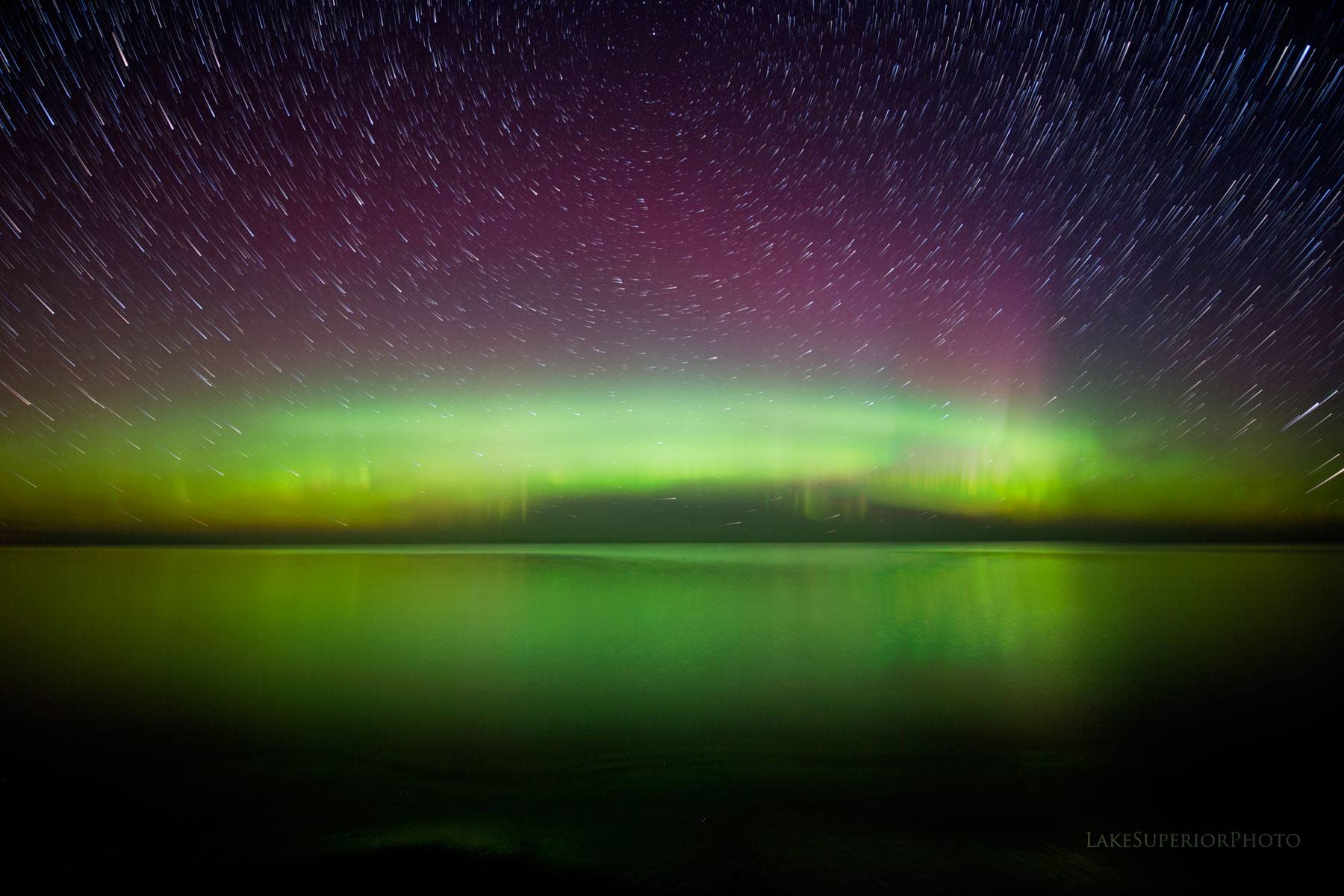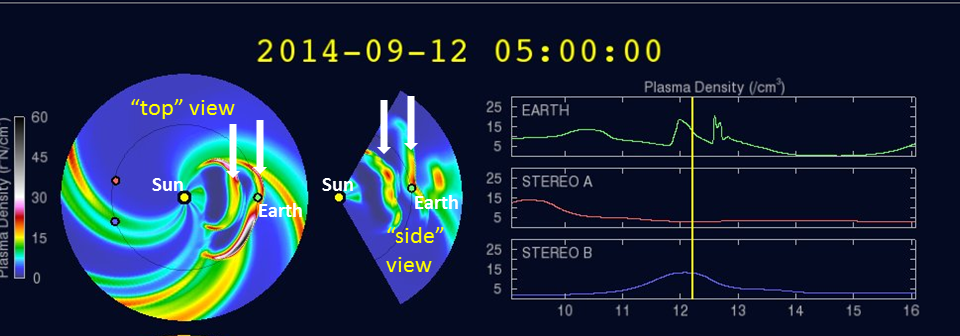
Aurora on 28 Aug. 2014 as seen over Lake Superior, from Marquette, MI (courtesy Lake Superior Photography).
The first of a pair of solar coronal mass ejections (CMEs) from sunspot AR2158 is supposed to reach Earth tonight, providing auroral displays (northern lights) unusually far south.
According to the most recent advisory from NOAA’s Space Weather Prediction Center,
“…conditions such as these could lead to auroras observed from the middle or southern states.”
Of course, any auroral displays visible in the southern U.S. are exceedingly rare. The last event that far south was October 24, 2011, with aurora visible as far south as Oklahoma and Alabama.
The second of the CMEs is traveling faster than the first, and is supposed to reach Earth about a day later. The probability of more events remains relatively high. According to SpaceWeather.com,
“More radio bursts may be in the offing. Sunspots AR2157 and AR2158 have unstable magnetic fields that harbor energy for strong explosions. NOAA forecasters estimate a 40% chance of X-class flares and a whopping 85% chance of M-flares on Sept. 11th.”
Here’s the latest solar wind model forecast for midnight tonight, showing the passage of the first plasma event from the first CME, and then second one following it:

Solar wind plasma density forecast for midnight tonight, showing two solar eruption events arriving at Earth.
The model animation is pretty cool, and provides a good conceptual view of how these plasma events exit the Sun and travel toward the Earth.
For those interested in viewing tonight, try NOAA’s Ovation aurora monitoring tool, which is based upon the latest polar orbiting satellite measurements. If that page is not up to date with the latest satellite data, this one usually is.

 Home/Blog
Home/Blog



